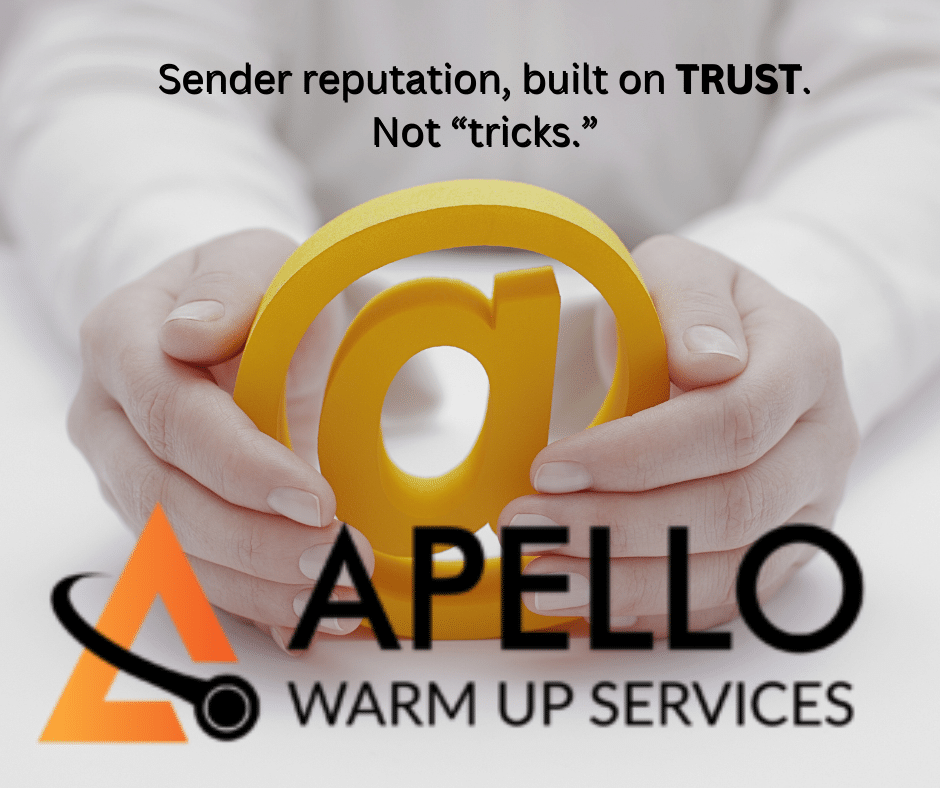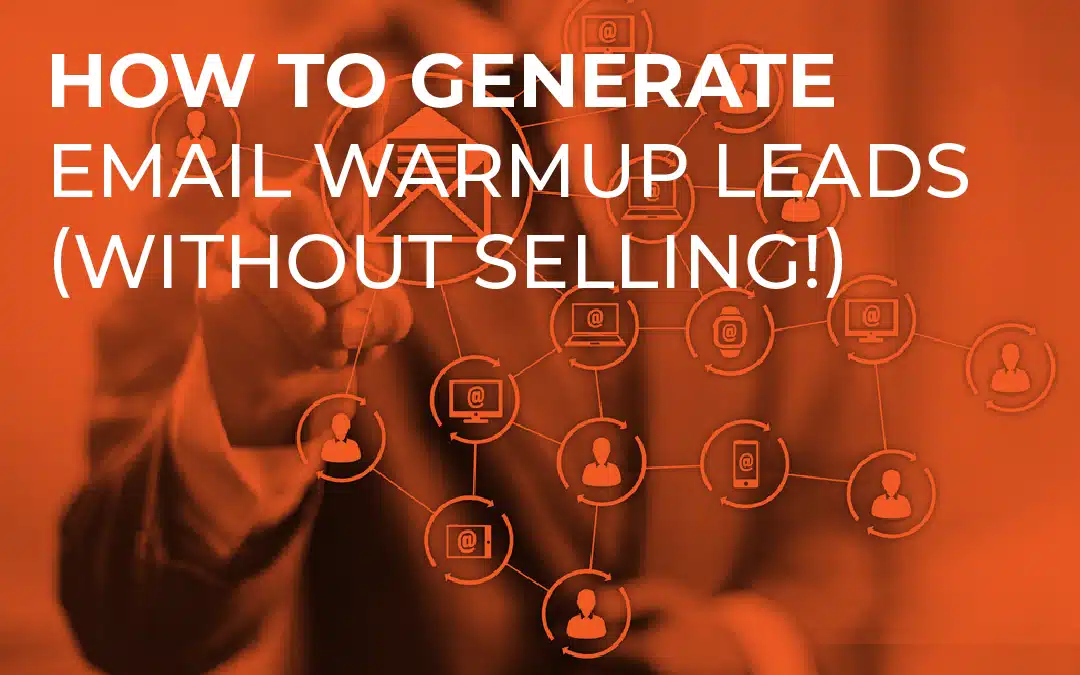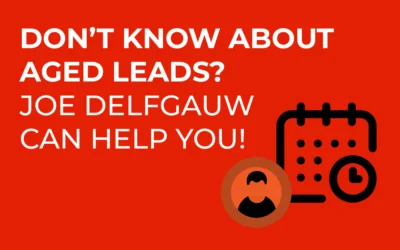Do you want to generate email warmup leads but feel stuck on where to begin? This is a common hurdle for many businesses diving into email marketing. A strong start is crucial for the success of your future email campaigns.
An email warmup is essential for getting your messages seen, guiding them to the main inbox instead of the spam folder. The process is all about building a good sender reputation with each email service provider. This involves sending emails gradually to an engaged audience, proving you are a legitimate and trustworthy source.
Let’s explore effective strategies to generate these vital warm-up leads for your email account. This guide provides a clear path to enhance your email deliverability. You’ll soon be ready to launch a successful cold email campaign.
Table of Contents:

- Understanding Email Warmup Leads
- How to Generate Email Warmup Leads
- Best Practices for Email Warmup
- The Role of Email Warmup Services
- Measuring Success in Email Warmup
- Common Pitfalls to Avoid
- Frequently Asked Questions
- Conclusion
Understanding Email Warmup Leads
Email warmup leads are contacts who actively help establish your sending reputation. These are people who consistently open, reply to, and engage with your messages. This positive activity signals to an email provider that your content is valuable and desired.
This matters because service providers use sophisticated algorithms to filter incoming mail and determine its placement. If you suddenly start sending a high volume of emails from a new email account, their systems see it as a red flag. This is precisely the problem that a proper warmup process solves.
Using these leads allows you to build trust with providers like Google and Microsoft over time. They form the bedrock of any effective email outreach strategy. Without a solid domain reputation, even the best-written emails might never be read.
How to Generate Email Warmup Leads
1. Leverage Your Existing Network
Your first source for email warmup leads should be people you already know. Friends, family members, and colleagues can be an excellent starting point. Simply ask them to add your new email address to their contacts and to reply to the first email you send.
This simple action of being added to a contact list significantly boosts your sender reputation. Remember that for this initial phase, quality engagement is far more important than a large list size. A small group of highly engaged contacts is more beneficial than a thousand unresponsive ones for email lead generation.
You can even create a small, segmented list of these “friendlies” to kick off your sending. Send them a personal note asking for a quick reply. This initial, positive interaction is a powerful signal to the email service.
2. Use Social Media
Your followers on social media platforms are another valuable pool of potential warm-up leads. These individuals have already shown interest in your brand and are more likely to engage. Share a direct link to your email signup form across your social channels.
Clearly explain the benefits subscribers will receive, such as exclusive content, early access to products, or special offers. You could run a giveaway or offer a unique resource to incentivize signups. Just be sure to adhere to each platform’s promotional guidelines.
This method helps you build a list of people who are genuinely interested, which is ideal for the email warmup process. They are primed to open your emails. This leads to higher open rates right from the start.
3. Create Valuable Lead Magnets

Lead magnets are free, high-value resources offered in exchange for an email address. Popular options include ebooks, detailed guides, webinars, or helpful checklists. The key is to create content that directly solves a problem for your target audience.
Promote your lead magnet prominently on your website, in blog posts, and across social media. When someone provides their email to get your resource, you acquire an email lead who is interested in your expertise. This makes them a perfect candidate for your warmup sequence.
A well-crafted lead magnet not only grows your list but also pre-qualifies your leads. It starts the relationship on a positive note by providing immediate value. This is a foundational strategy for sustainable lead gen.
4. Optimize Your Website for Signups
Your website is a powerful tool for capturing warmup leads around the clock. Place clear and concise email signup forms in strategic locations like your blog sidebar, footer, and about page. You can also use exit-intent pop-ups or hello bars to grab the attention of departing visitors.
It’s important to be transparent about what people are signing up for. Let them know what kind of content they will receive and how often. Setting these expectations upfront helps build trust and reduces the chance of future unsubscribes or spam complaints.
Make the signup process as simple as possible, asking only for an email address initially. A user friendly form with a compelling call to action will significantly increase your conversion rate. This continuous stream of signups provides a steady supply of new contacts to warm up.
5. Partner with Other Businesses
Strategic partnerships can be an effective way to generate high-quality leads. Identify businesses that cater to a similar audience but are not direct competitors. You could propose a content swap, a joint webinar, or promoting each other’s newsletters.
This approach allows you to tap into an established, engaged audience that already trusts your partner. When choosing partners, ensure their brand values and audience quality align with your own. The goal is to attract leads who will find your content relevant and be likely to engage.
These partnerships can accelerate your list growth and provide a significant number of contacts for your warmup efforts. It is a mutually beneficial strategy for lead generation. This method can be a powerful engine for growth.
Best Practices for Email Warmup
Once you have a list of warmup leads, the next step is to begin the warmup process itself. Following best practices is critical to successfully build your email reputation. This will help you avoid spam folders and reach the inbox.
- Start slow: Begin by sending a handful of emails on the first day. A gradual increase in sending volume is essential for sending cold emails successfully. Gradually increasing the number of emails you send each day mimics natural human behavior and is less likely to trigger spam filters.
- Mix it up: Send a variety of content in your emails. Your outreach should include a mix of plain-text messages with questions, newsletters with links, and other formats. This diversity helps service providers see your account as a real person, not an email automation bot.
- Encourage interaction: Actively ask your recipients to engage with your messages. You can ask a question that prompts a reply, include a link to valuable content, or request they add you to their address book. These positive email signals are crucial for building a strong sending reputation.
- Monitor your metrics: Pay close attention to your email open rate, click-through rates, reply rates, and spam complaints. These numbers provide direct feedback on how your warmup is progressing. Tools from your email service can help track this data.
- Be consistent: Maintain a regular sending schedule without large, sudden spikes in volume. Consistency shows email providers that you have a predictable and legitimate sending pattern. Sticking to a schedule is a key part of how email warmup work effectively.
Patience is essential during the email warmup process. Building a solid sender reputation takes time and consistent effort. The long-term benefits of great deliverability are well worth the initial investment.

The Role of Email Warmup Services
While manually warming up an email account is possible, it demands significant time and attention to detail. This is where an email warmup tool or service can be incredibly helpful. These platforms automate the warmup process, making it more efficient and reliable.
A typical warmup tool works by connecting your email account to a network of other real email inboxes. It then uses email automation to send messages from your account to these inboxes. The tool ensures these emails are opened, replied to, and sometimes marked as important, creating the positive engagement signals needed to build your reputation.
The table below compares different approaches to warming up your email domain.
| Approach | Description | Pros | Cons |
|---|---|---|---|
| Manual Warmup | You personally email contacts and manage the process. | Low cost, high-quality engagement with known contacts. | Time-consuming, difficult to scale, relies on others’ participation. |
| Automated Warmup Tool | A software service automates sending and receiving emails. | Scalable, efficient, consistent engagement, often user friendly. | Monthly subscription cost, engagement is with other tool users, not potential customers. |
| Managed Service (like Apello) | A dedicated service with human agents warms up your account. | Extremely effective, fast results, hands-off for you, real human interaction. | Higher cost than automated tools, requires trust in the service provider. |
Apello Email Warmup Services provides a different level of service. They operate as a live call center focused on email, domain, and IP warmups. Their team contacts your leads directly to guide them through opening, responding, and favoriting your emails, dramatically speeding up the process of improving your email reputation.
Measuring Success in Email Warmup
How can you be certain that your email warmup efforts are paying off? Tracking the right metrics is the only way to know for sure. Monitoring your progress helps you make informed adjustments and ensures you are on the path to great deliverability.
- Deliverability rate: This is the percentage of your emails that successfully land in a recipient’s inbox, not bouncing or going to spam. A high deliverability rate is the ultimate goal of any warmup process. You want to see this number consistently above 95%.
- Open rate: A strong open rate shows that your emails are avoiding spam filters and your subject lines are compelling. During warmup, you should aim for very high open rates, often above 50%, as you’re sending to an engaged list.
- Reply rate: Replies are one of the strongest positive signals you can send to email providers. A steady stream of replies tells them that you are having real conversations. A good support team at your warmup service can help drive these replies.
- Spam complaint rate: This metric should always be as close to zero as possible. Even a complaint rate as low as 0.1% (1 in 1,000) can damage your sending reputation.
- Deliverability score: Some tools provide a sender or deliverability score, which aggregates various factors into a single number. Tracking this score over time gives you a clear indication of your reputation’s health.
If you see these metrics trending in a positive direction, your strategy is working. If your open rates are low or your emails aren’t getting replies, it might be time to reassess your content or sending schedule. Good inbox placement depends on these numbers.
Common Pitfalls to Avoid
As you work to generate email warmup leads and build your reputation, be mindful of common mistakes that can derail your progress. Avoiding these pitfalls is just as important as following best practices. They are critical for anyone sending cold emails.
- Buying email lists: This is a tempting shortcut that almost always backfires. Purchased lists are filled with unverified, uninterested, and sometimes fake email addresses that lead to high bounce rates and spam complaints.
- Sending too much, too soon: One of the fastest ways to land in inboxes spam folders is by sending a large volume of emails from a new account. Always follow a gradual sending schedule to properly warm your email domain.
- Neglecting list hygiene: Your email list is not static; it requires regular maintenance. Periodically remove subscribers who are inactive or whose email addresses consistently bounce to protect your reputation.
- Ignoring engagement metrics: Low open rates, a lack of clicks, and high bounce rates are clear warning signs. Ignoring this data can lead to your emails being flagged as spam by service providers, hurting all future email campaigns.
- Using misleading subject lines: Clickbait subject lines may get you an initial open, but they damage trust with your audience. This can lead to spam complaints and unsubscribes, harming your long-term email marketing efforts.
Steering clear of these common errors will help you build a healthy, engaged email list and a strong, lasting sender reputation. This foundation is vital for effective cold emailing. The effort will pay off with improved email open rate metrics.
Frequently Asked Questions
Many people have questions about the details of the email warmup process. Here are answers to some of the most frequently asked questions. This should help clarify how to best approach your email warmup strategy.
How long does it take to properly warm an email account? The timeline can vary, but a standard warmup period is typically 2 to 4 weeks. For a brand new domain, it could take longer, sometimes up to 12 weeks. The key is gradual, consistent sending to build trust with email providers.
What is the difference between domain warmup and email account warmup? Domain warmup focuses on building the reputation of your entire sending domain (e.g., yourcompany.com). Email account warmup focuses on the reputation of a specific email address (e.g., sales@yourcompany.com). Both are important, but domain reputation is the foundation for all email accounts on that domain.
Can I use an email warmup tool for multiple email accounts? Yes, most warmup tool platforms are designed for marketing teams large and small. They allow you to connect and warm up multiple email accounts simultaneously. This is especially useful for sales teams that engage in cold outreach.
How does email warmup work exactly? An email warmup tool sends emails from your account to a network of safe inboxes. These emails are then automatically opened, replied to, and marked as important. This activity mimics positive human engagement, which signals to email service providers like Google and Outlook that you are a legitimate sender, which helps you avoid spam folders.
Is a free trial a good way to test a warmup inbox service? A free trial, such as a 7 day free trial, can be a great way to evaluate a service’s interface and features. It allows you to see how the warmup inbox functions and if the platform is user friendly. However, remember that a full warmup takes several weeks, so a short trial won’t show the final results but can help you choose the right warmup service for your needs.

Conclusion
Generating email warmup leads is a fundamental part of a successful email marketing strategy. This process lays a solid foundation for all your future cold email campaigns. By using the strategies outlined here, you can build a list of engaged subscribers who actively help improve your sender reputation and email deliverability.
Patience and consistency are vital to the email warmup process. The goal is not a quick victory but sustained, long-term success that ensures your messages reach the inbox. Taking the time to build genuine connections will pay dividends in higher engagement and better campaign results.
If you’re ready to improve your email outreach, consider partnering with an expert service. A dedicated partner can help you generate email warmup leads more efficiently and accelerate your path to inbox success. Don’t let your carefully crafted emails get lost.
Start building your warmup strategy today to protect your email reputation. Your future marketing efforts will be far more effective because of the groundwork you lay now. A strong sending reputation is one of your most valuable digital assets.
You can book a consultation with Apello Email Warmup Services to discover how their unique approach can elevate your warmup process. Their live call center method provides a fast track to better email deliverability. They also receive alerts to ensure your campaigns run smoothly.




